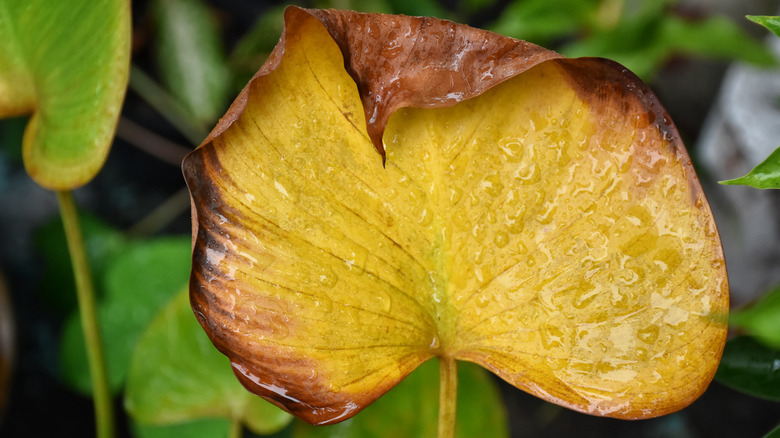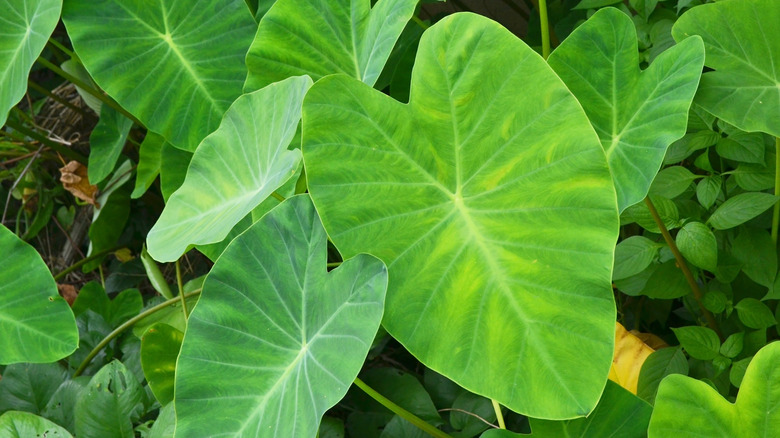Why Your Elephant Ear Leaves Are Turning Yellow (And What To Do About It)
The elephant ear plant, known for its large, distinctively shaped leaves that resemble the ears of the earth's largest land mammal, can be finicky when it comes to sunlight and watering. Neglect or over-attention are the primary culprits behind their vibrant green leaves turning a disconcerting yellow. This plant requires watering and sun exposure ala Goldilocks style — not too little, not too much, but just right. Temperature, age, and soil issues can also have a negative impact.
Elephant ear plants come in various sizes, colors, and slight leaf shape variations, and they thrive both indoors and outdoors, making them the perfect plant pet for gardeners. They typically experience fast growth when planted in spring or early summer and reach their full size in about two months. Although they sound strong and majestic, they are quite fussy. So, how do you care for your elephant ears properly and prevent their leaves from yellowing?
Giving your elephant ear some proper care
To maintain the vibrant green foliage of your elephant ear plant, start by considering the lighting conditions. These plants thrive in bright, indirect light that mimics their natural habitat, so avoid exposing them to excessive direct sunlight. If the leaves appear peaked and your elephant ear is getting too much harsh, golden sunlight, then get that baby some shade. Conversely, insufficient light will stunt growth and promote yellowing of the leaves, so filtered sunlight is best.
Elephant ear plants prefer consistently moist soil but will wither and die if waterlogged, even for a short time. Allow the top inch of soil to dry before watering, and use well-draining soil and pots with drainage holes. Overwatering can cause root rot and yellowing leaves. This somewhat temperamental plant also thrives in humid environments, so running a personal mini humidifier or misting it will help it thrive.
Keep things balanced to avoid yellowing leaves
The elephant ear plant is sensitive to extreme temperatures and even slight drafts. Therefore, it is important to maintain a consistent temperature between 60 and 80 degrees Fahrenheit. Any significant temperature fluctuations can cause stress to the plant, resulting in the leaves losing their color and wilting. Additionally, it is important to be cautious with fertilization. Over-fertilization, a common garden fertilizing mistake, can cause nutrient imbalances, which can lead to yellowing leaves. To avoid this, follow a balanced fertilization schedule during the growing season using a 20-20-20 fertilizer, and reduce the frequency during the elephant ear's hibernation stage.
If you have provided the plant with everything it needs and still notice yellow leaves, it may be a sign of unwanted visitors like spider mites or aphids. Check the undersides of the leaves for any signs of infestation and take action to prevent it from spreading.

